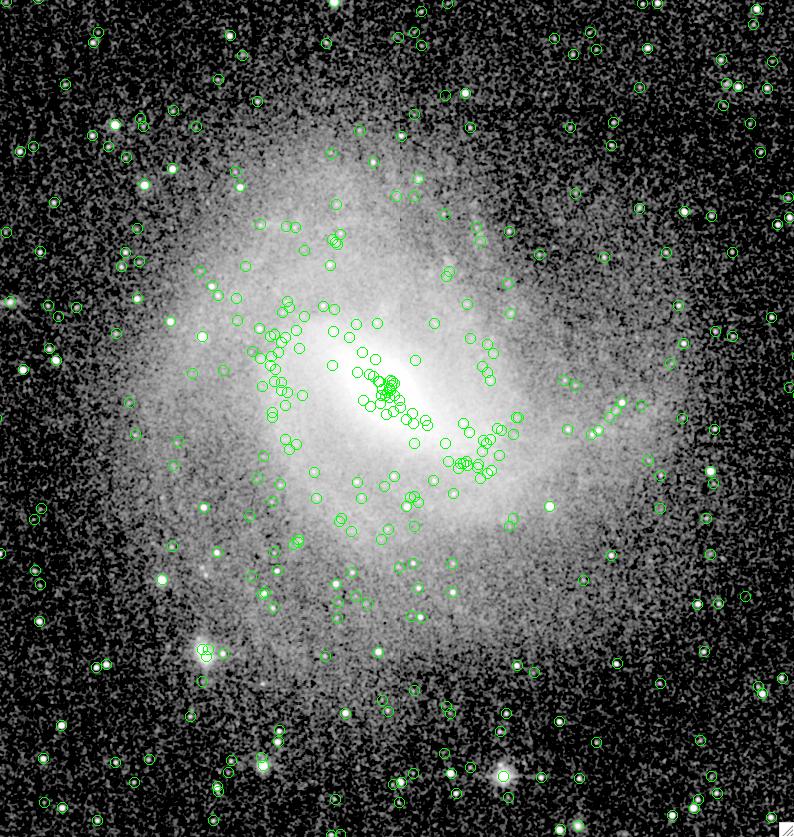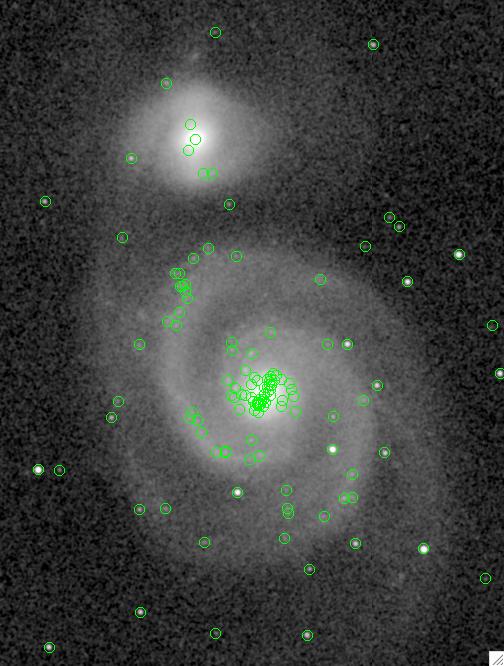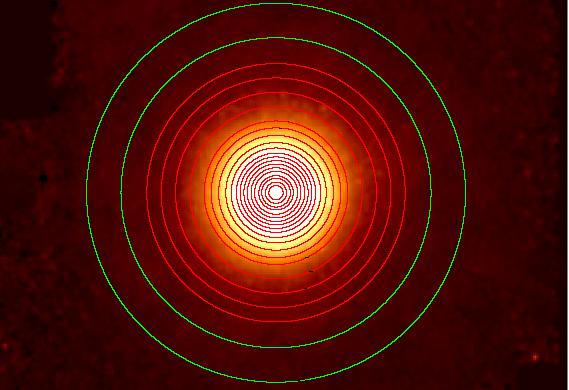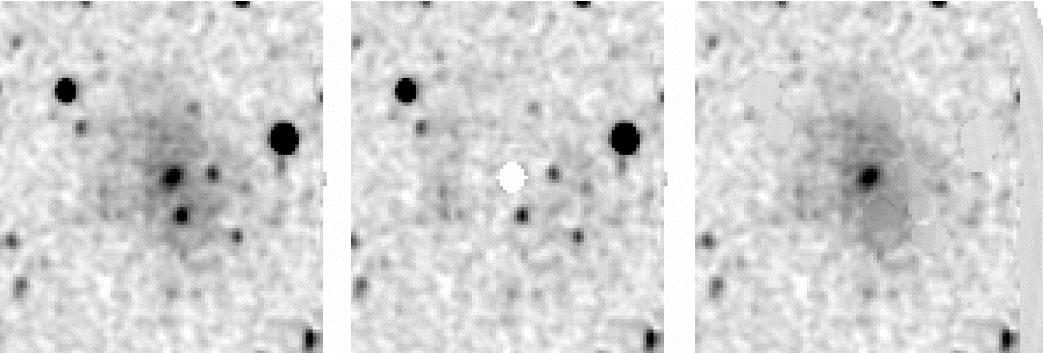

 |
WISE Extended Sources |  |
Extended sources, in the form of fuzzy galaxies and Galactic nebulosity,
will be present in every WISE image frame, thus complicating the primary
mission goal of detecting, characterizing and cataloging point sources.
The basic data reduction must include some level of extended source characterization
to properly handle point source photometry and quality assessment of
the resulting catalogue. A secondary issue is the scientific potential
of the extended sources themselves. WISE will resolve hundreds of thousands
of galaxies and its images will contain a rich assortment of Galactic
emission, both high surface brightness and diffuse varieties. A relatively
small/modest effort to incorporate extended sources into the data reduction pipeline
would greatly enrichen the WISE source catalogue.
The main issues to consider:
My own sense is that we should dedicate at least one FTE/yr throughout
the mission to deal with extended sources. That is a bare minimum
(but not unlike 2MASS!). A more optimal approach would be to
have a scientist and data analyst assigned to extended sources --
from 1.5 to 2 FTE/yr.
This document outlines the impact that extended sources
have on the WISE mission. Read on ...
The WISE mission will map the whole sky, capturing every planet, asteroid, star, nebula and galaxy that falls within its sensitivity limits. However, due to the limited resources that have been mostly dedicated to hardware development/construction, the extended source component of the mission is, for the most part, undeveloped and unrealized. Resolved galaxies, nebulae and other fuzzy objects will not be measured or catalogued as part of the primary mission data products. I will argue in this document that the WISE P.I. and science team should consider placing basic extended source processing within the lien list of tasks that we desire to carry out. Even with a modest set of resources, the resulting large return in data quality (and science potential) should justify the expense.
There are three basic kinds of resolved or extended sources: discrete, diffuse and a combination of the two. Examples include:
| Point sources are sometimes superimposed on extended sources and their flux measurement can be biased by the surrounding/nearby extended emission. Conversely, point-like sources can be spuriously detected on large, extended objects. The figure to the right shows the nearby galaxies M83 & M51 with 2MASS point source detections overlayed. Many of these sources are pieces of the galaxy (e.g., SF/HII regions) or noise bumps that are enhanced by the underlying galaxy light. Without even minimal characterization of the extended source, we have no way of reliably flagging "point" sources that might be contaminated or modified by the underlying emission. At the very least we will need to flag sources that are in close proximity to 2MASS galaxies. |

|

|
Since the WISE PSF beam is 6 - 12 arcsec in the 3 to 24um window that it observes, the characteristic resolving element thus ranges between ~20 to 40 arcsecs (assuming > 3*beam ). Based on the 2MASS Extended Source Catalog (XSC), we can expect tens of thousands of discrete sources (galaxies) to be resolved with WISE, at least at the short wavelengths. Below is a table of 2MASS XSC sources that have sizes greater than the WISE resolving element. A plot showing the XSC size distribution is given here.
| Diameter (arcsec) |
N ( > Radius) | comment |
|---|---|---|
| 10 | 1.6M | resolution limit of 2MASS |
| 12 | 815,732 | |
| 15 | 488,858 | |
| 20 | 175,125 | resolution limit at 3-12um |
| 25 | 85,779 | |
| 30 | 50,589 | |
| 40 | 23,877 | resolution limit at 24um |
| 50 | 13,407 | |
| 60 | 8,505 | |
| 80 | 4,248 | |
| 100 | 2,578 | |
| 150 | 1,008 |
At the WISE short wavelengths, some ~200,000 galaxies will be resolved, thus requiring a more careful photometric extraction -- note that a straight PSF-fitting or aperture-correction measurement of a resolved source will result in a systematic underestimate of the true flux. At longer wavelengths, some 25,000 sources may be resolved by WISE, although this estimate is more uncertain since the K-band size metric is sensitive to stars whereas the 12/24um is sensitive to the ISM (which has a different spatial distribution from the evolved stellar population). If anything, WISE will resolve more sources than this K-band estimate because of the disk-extended nature of the hot dust component (e.g., see the image of the Sombrero Galaxy, above). Resolved sources must be treated more carefully to avoid systematic biases in the source catalog fluxes.
In the plane of the Milky Way, complex sources (e.g., HII regions, YSOs) will dominate the population of extended sources. Diffuse emission arising from ISM dust-heating by hot stars will be everywhere, creating a very difficult background to measure and characterize (e.g., see the MIPSGAL image of a typical field in the Milky Way). How do we flux calibrate this diffuse emission? Image artifact mitigation will be an important exercise to create scientifically valid images that can be used to study the diffuse and extended components of WISE observations that cross the Plane.
At the very least, the data reduction pipeline must have a way to measure the flux of discrete extended sources. Circular apertures that capture a significant fraction of the source light is the basic measurement. Consistent measurements from band-to-band ensure reliable color metrics. A corresponding size metric is another basic measurement. The size of the source determines how large the aperture measurements should be. To these ends, the local background must be measured to a high accuracy in order to remove residual light from the source fluxes.
|
To summarize the basic measurements that are needed for extended sources:
|

NGC6703 with IRAC 3.6um. A set of nested circular apertures are centered on the nucleus. The local background is measured with an circular annulus, just outside the faintest isophotes. |

NGC6703 integrated flux curve of growth for the four IRAC bands. |
Reliable fluxes, surface brightnesses and sizes require background, artifact and contaminating source subtraction to allow clean characterization and extraction. Total fluxes, in particular, require very careful image cleaning and subsequent characterization. The usual procedure is to identify nearby stars and remove them by either masking them or subtracting their flux (using a PSF or some other simple model). The object source is modeled (e.g., using an ellipsoid) and stars are removed interatively; see the illustration below.

Left panel: disk galaxy as seen in the K-band; several foreground
stars contaminate the disk. Middle panel:
galaxy is model and subtracted from image, leaving stars.
Right panel: stars are subtracted, and the cleaned galaxy remains.
With images cleaned of artifacts and stars, the background may be measured and the source characterized using circular and elliptical apertures. The procedure follows roughly:
The carefully planned WISE data processing pipeline, constrained by budget, time and personal limitations, is streamlined to create images and catalogs that are optimized for point sources only. Both data products, however, will be subject to the unique properties of extended sources. On the one hand, point sources that are in close proximity to extended emission (galaxies, nebulae) will have extracted properties that are modified (e.g., contaminated) by the underlying emission. On the other hand, the images will contain both uniform (e.g., zodiacal light) and clumpy extended emission (from resolved galaxies, the Milky Way) that will have properties that demand a separate calibration from point sources. That is to say, for the surface brightness of any given pixel to be meaningful, the extended emission must be characterized and understood well enough to be flux calibrated. Moreover, the science return from basic measurements of extended sources (most importantly, resolved galaxies) will be a boon to the astronomical community. This is a good time for the WISE P.I. and and the science team to consider how WISE should deal with extended sources. My personal opinion is that we should dedicate at least FTE during development of the data processing to measure extended sources, and another 1.5 FTEs to the analysis of extended sources in the raw and subsequent release data products.
Experiment to test completeness:
An interesting test would be to take a SWIRE 24um image, convolve and degrade to WISE sensitivity/resolution, mark the 2MASS point and extended sources, then visually examine the image(s) to see if any 24um extended sources are clearly resolved but not identified by 2MASS. This will indicate the necessity (or otherwise) of separately identifying extended sources in WISE images (as opposed to just using a prior list). A similar experiment may be carried out with GLIMPSE/MIPSGAL images, covering the Plane where diffuse/nebular emission will be maximized and differentiated from the 2MASS K-band.
Science Cases:
Resolved galaxies will be relatively nearby, similar to the 2MASS XSC volume, stretching to z ~ 0.1. Although the WISE resolution is poor compared to 2MASS, the increase in sensitivity to bulge light (3-5um) and to disk light (12-24um) will compensate to some degree. The science cases for resolved galaxies are thus confined to the local universe, and like 2MASS, the whole-sky survey means that WISE can be used as an effective boundary condition to the high-z studies of galaxy evolution that are now coming to fruition with Spitzer. But unlike 2MASS, WISE will be sensitive to both high-mass galaxies (early types) and to star-forming galaxies (late types), thus complementing/completing the NIR surveys. More science cases are outlined in studies created during the NGSS proposal phase, including nearby galaxies, clusters and normal galaxies (relevant to both resolved and unresolved sources), and large scale structure.